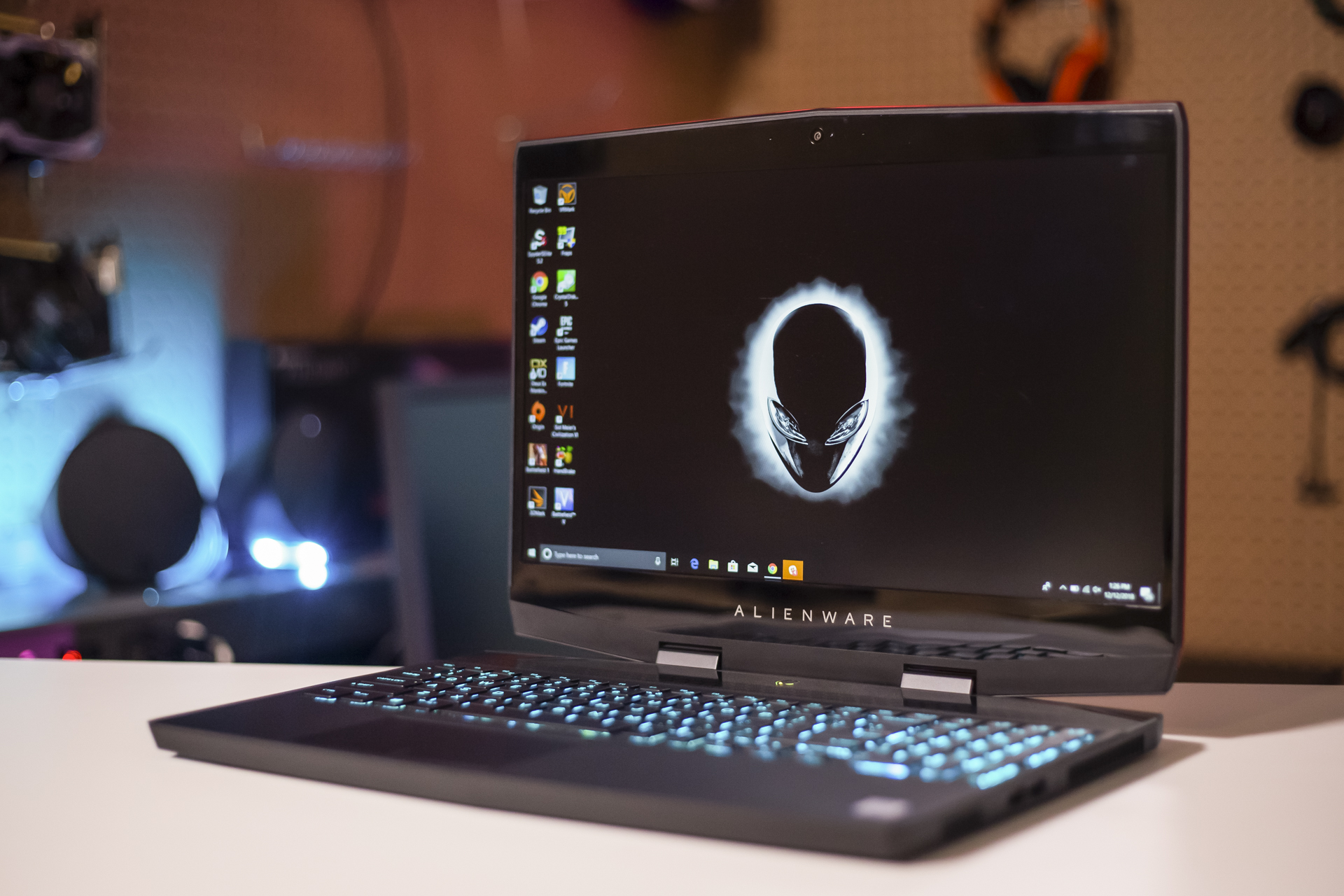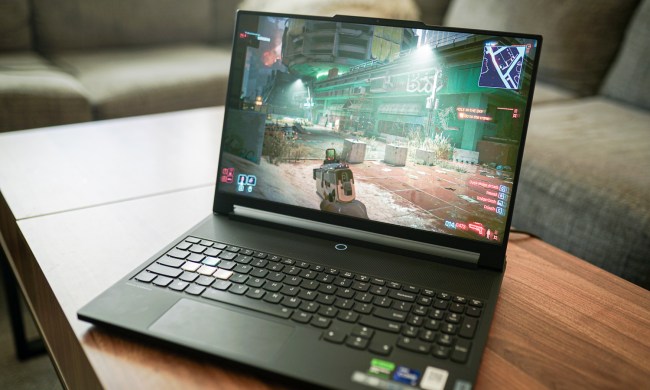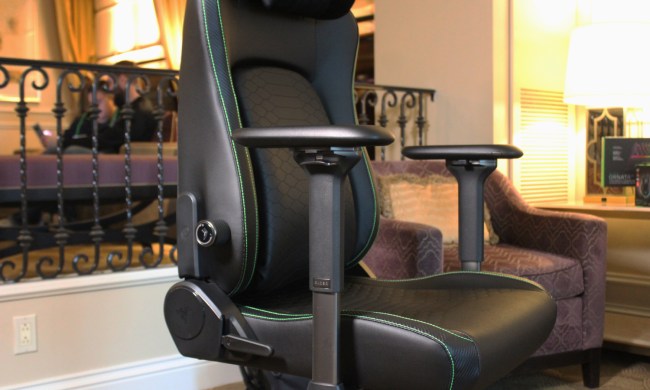
Laptop gaming has almost always meant big, chunky form factors with poor battery life that really test the limit of what you could call a portable gaming machine. Today, however, that’s not always the case. Standouts from various manufacturers offer great gaming performance but with a much lighter frame and often better battery life too. To see which is best out of two of the industry’s most easy-to-recommend modern gaming laptops, we pitted the Alienware m15 vs. Razer Blade in the most important of tests and comparisons.
Design

Both the Razer Blade and the Alienware m15 look drastically different from more traditional
The Blade is so sleek and understated that day to day, you could easily compare it to business-orientated laptops like the Dell XPS 15 or the MacBook Pro. It still retains some gamer styling like RGB backlighting and a jet black paint job, but this is closing in on stealth gaming territory, You might even be able to convince your boss to buy one for your next office upgrade.
In comparison, the Alienware m15 is a little more overt in its gamer pedigree. It can come with fantastic aesthetic options like the soft-touch, Nebula Red lid that our review unit sported and that’s a lovely extra if you’re willing to pay for it. The Alienware logo and some of the angled edges also give it that gamer look, which is something you may or may not enjoy depending on your own personal proclivities.
Port selection on the two devices is comparable, but there are some subtle differences. The Blade sports a single USB-C Thunderbolt 3 connector, a trio of USB-A 3.1 ports, an HDMI 2.0 output, a mini DisplayPort 1.4 connector, and support for Gigabit Ethernet. It does lack any form of SD card reader, but so does the m15. That laptop has Gigabit Ethernet, three USB-A 3.1 ports, a Thunderbolt 3 USB-C port, an HDMI 2.0 output, mini DisplayPort 1.3 connector, a bespoke Alienware graphics amplifier port, and a 3.5mm audio jack.
The Blade has an excellent, large touchpad and a responsive keyboard, although the layout of the latter does take some getting used to. It also features per-key RGB backlighting, which the m15 doesn’t. The Alienware keyboard does have general backlighting, giving you the choice of six different colors, but it’s otherwise unremarkable. Its touchpad, however, is a fantastic, glass-surface that uses Windows Precision drivers so gestures are very responsive and its sheer size is a real treat.
Performance

A gaming laptop lives and dies on its ability to play games and fortunately both systems deliver on that front. The Razer Blade starts at $1,600 with an eighth-generation Intel Core i7-8750H CPU with six cores and 12 threads and pairs it with 16-32GB of DDR4 memory. The entry level graphics option is an Nvidia GTX 1060 Max Q design and storage options include a 128GB SSD paired with a 1TB hard drive, or double for an extra hundred dollars.
There are also options to upgrade the graphics card, but they go hand in hand with the display. The Blade starts with a 15.6-inch 1080p, 60Hz display that can be upgraded to a 144Hz option with the same card, or a GTX 1070. You can also switch to a GTX 1070 paired with a 4K panel at 60Hz. That last option is the most expensive at $2,900 and ships with 512GB of storage.
The m15 has a much lower starting price point of just $1,380 despite having comparable hardware for the money. The base model has a Core i7-8750H CPU, paired with 8GB of RAM, and a GTX 1060. It has a one terabyte caching drive for storage, although if you’re willing to spend more you can have just about anything you want, up to multiple terabytes of SSD space.
The most comparable configuration to the Blade, however, is the $1,680 version which has the same hardware as the base model, but doubles the RAM to 16GB and has 256GB of SSD storage paired with a 1TB hard drive. Both versions have the same 15.6-inch, 60Hz, 1080p, IPS display which we thought looked great in our testing.
Pricier models cost $2,050 and $2,350 a piece, with more storage space, a GTX 1070 Max Q graphics chip, and display options that include a 144Hz 1080p panel and a 4K 60Hz panel.
Despite their hardware similarities, we found the m15 actually performed slightly better in general computing tasks — significantly so when it comes to storage performance. Its gaming chops were also impressive, offering comparable and in some cases, better performance than the Razer Blade. It very much depends on the game though. Both laptops are capable of playing games like Battlefield 1, Civilization VI, and Deus Ex: Mankind Divided at ultra details levels at 1080p at high frame rates.
Portability

Portability is one of the biggest selling points of these new, slimline
That difference isn’t enough to pick one over the other, but battery life did show a much greater disparity between the two. The Razer Blade managed just over four hours in our web browsing test, which the m15 beat quite handily at more than five and a half hours. However, thanks to the Blade’s support of Nvidia’s Optimus technology, which lets it use the CPU’s on board GPU when the greater power of its graphics chip isn’t needed, it managed an amazing seven and a half hours in our video loop test. The m15 on the other hand, didn’t even manage five. That makes the Blade a far more trustworthy media machine.
The entry-level Blade does come with a smaller battery than the one we tested, though, so take note of that when buying if battery life is of major concern to you.
The Blade still cuts through the competition

There’s are a number of reasons that the Razer Blade remains our favorite gaming laptop of 2018. As good as the Alienware m15 is, it really just bolsters those plus points in comparison. It’s a great
That’s not to say that the m15 is like traditional



